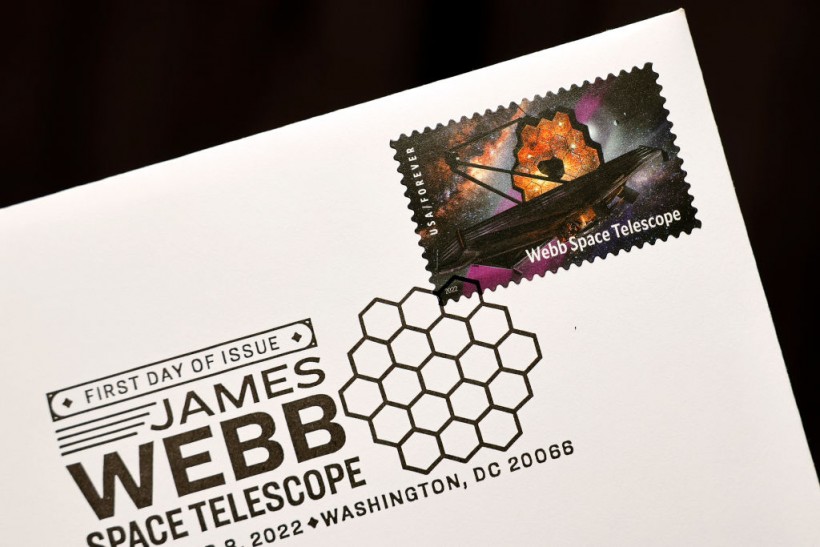Exactly a year ago, NASA unveiled the James Webb Space Telescope's (JWST) first breathtaking image on July 12, 2022, offering fresh insights into the formation of early galaxies post-Big Bang and subsequently illuminating various aspects of the cosmos.
As a groundbreaking result of nearly thirty years of work and an investment of €9.5 billion, this pioneering telescope grants us an unparalleled view of the universe, enabling us to observe distant galaxies and explore the birth and demise of stars like never before.

In this photo illustration, U.S. Postal Service unveils a new stamp featuring the James Webb Space Telescope during the First Day of Issue dedication ceremony at the U.S. Postal Museum on September 08, 2022 in Washington, DC.
Engineering Marvel: What's So Special About JWST's First Anniversary?
According to the Daily Telegram, JWST holds a remarkable distinction as the largest space telescope ever, featuring a 6.5-meter aperture compared to Hubble's 2.4-meter aperture.
Richard Hedrick, president and CEO of PlaneWave Instruments, which designs telescopes for astronomers, underscores the significant increase in light gathering area, amounting to 25 square meters, 5.6 times larger than Hubble's 4.5 square meters.
With its infrared observational capabilities, the space telescope can probe greater distances, providing insights into the past due to the way light travels. This unique feature enables the telescope to delve into nebulae, revealing their internal activities.
Hedrick explains the necessity of infrared observation beyond Earth's atmosphere due to the universe's expansion and the redshift effect on distant objects, shifting their light into the infrared spectrum.
JWST is considered an engineering marvel designed to fit within a rocket for launch and unfold into its operational form in space. The telescope's large 6.55-meter concave primary mirror efficiently collects and focuses light, while 18 hexagonal-shaped mirrors, functioning as one, enable folding and fitting within the rocket housing.
In July 2022, astronomers, including those from the University of Toledo, eagerly embraced the JWST, with promising initial observations expected to yield significant information in the future.
The telescope's remarkable 20-hour exposure provided an exceptionally deep view of the universe, surpassing the renowned Hubble Deep Field Image taken over 23 days, signifying a momentous achievement for astronomy and the JWST.
READ ALSO: NASA's James Webb Space Telescope Spotted Six Galaxies That Should Not Exist, Challenging Conventional Understanding
Looking Forward for JWST's Second Year
In an interview with Space.com, NASA expert Taylor Hutchison discussed the transformative impact of the $10 billion James Webb Space Telescope (JWST) on science during its first year in space, revealing how it has revolutionized astronomy by uncovering previously unseen aspects of the universe.
The space telescope's ability to probe new types of light has opened up unprecedented scientific opportunities, leading to unexpected discoveries and surpassing expectations in terms of image quality and resolution.
Hutchison expressed excitement about the second year of JWST's operations, anticipating even more surprising revelations that could fundamentally alter our understanding of the cosmos. The prospect of encountering phenomena that challenge existing interpretations and theories sparked curiosity and enthusiasm for the future.
Addressing aspiring young astronomers, Hutchison encouraged them to have fun exploring JWST data and immersing themselves in the breathtaking cosmic images produced by the telescope.
She emphasized that anyone can get involved in science by following their passion and being inspired by the observatory's achievements and the wealth of data it is producing. The telescope's impact is resonating with a wider audience, fostering excitement and appreciation for the beauty and mysteries of the universe.
RELATED ARTICLE: NASA's James Webb Space Telescope Captures the Birth of 50 Sun-like Stars on Its First Anniversary Observing the Universe
Check out more news and information on James Webb Space Telescope in Science Times.














